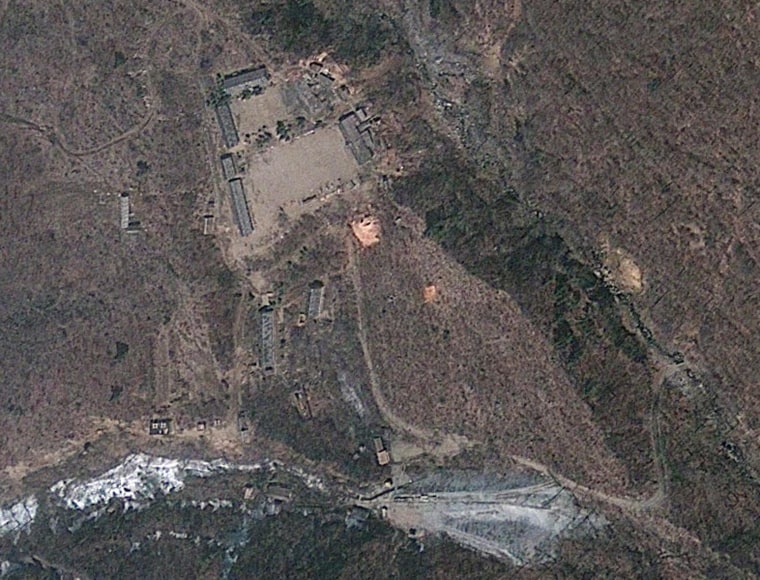With President Obama just across the border in South Korea on an official visit, U.S. and South Korean officials say there are “signatures and signs” that North Korea is preparing for its fourth nuclear weapons test, with “activity” at the nation’s test site in Punggye-ri near the Russian border.
The officials do not believe the North will test before the President leaves Seoul, but are concerned a test could take place not long after he leaves for Malaysia.
Commercial satellite imagery of the North Korean site shows the final preparations for a test launch, according to a South Korean official, who told foreign journalists early Friday that the North had placed “detonator, fissile material and measurement devices in the tunnel and sealed it.”
One U.S. official said intelligence has confirmed activity at the site, without describing it in detail. However, other experts tell NBC News that the telltale signs include preparation of a testing tunnel, and possibly the wrapping of the tunnel opening in camouflage netting to hide preparations.
"A test is possible at some point," said the U.S. official. He said that it is "less likely" that test will come in the next few days," but it “can't be ruled out. It's more about intentions than capabilities at this point."
President Obama arrived in South Korea on Friday morning local time, and leaves on Saturday evening local time – Saturday morning on the U.S. East Coast.

The official added a caveat, noting that in the past the North had made similar preparations without following through with a test. "We don't have perfect clarity on intentions," said the official.
The U.S and its allies in Northeast Asia fear that the next test, the first since January 2013, would be of a device using highly enriched uranium rather than plutonium as a fuel. Using HEU, say experts in and out of government, would signify that the North has two streams of fissile material, with enough of each to create a steady stream of weapons. The U.S. believes North Korea has between a dozen and a few dozen missile-deliverable nuclear weapons in its stockpile.
"It would be serious because of the advance," said Leonard "Sandy" Spector, deputy director of the Monterey Institute of International Studies' James Martin Center for Nonproliferation Studies. "The use of HEU would be a pretty important marker." So much so, Spector said, that the U.S. would no doubt go to the UN Security Council, and might try to "surge additional military capability to the region to reassure North Korea and Japan."
In addition, there are reports that the next test could be substantially larger than the three previous tests, in the range of 10 kilotons -- the same size as the Hiroshima blast. The last two tests of devices at Punggye-ri had a range of between six and seven kilotons and used plutonium.
Prior to landing in Seoul Friday, President Obama warned the North to restrain itself. In an interview with a South Korean newspaper, Obama said, "If North Korea were to make the mistake of engaging in another nuclear test, it should expect a firm response from the international community."
One reason government officials and experts believe the North will NOT test with President Obama in the south is that it would raise the stakes in the crisis dramatically.
"Why would they do that and force Obama to jump all over them?" asked David Albright, president of the Institute for Science and International Security (ISIS), a nuclear non-proliferation group that has tracked the North Korean program for 20 years. "It would force everyone to be much more hardline."
Albright added that his sources suggest a test is "more imminent than not," but that political concerns -- like Obama's presence in the South -- rather than technical ones will ultimately drive the decision.
But the U.S. official said he “wouldn’t put it past” the North Koreans to test a device before or after Air Force One lifts off. “We’ve learned that,” he said.
